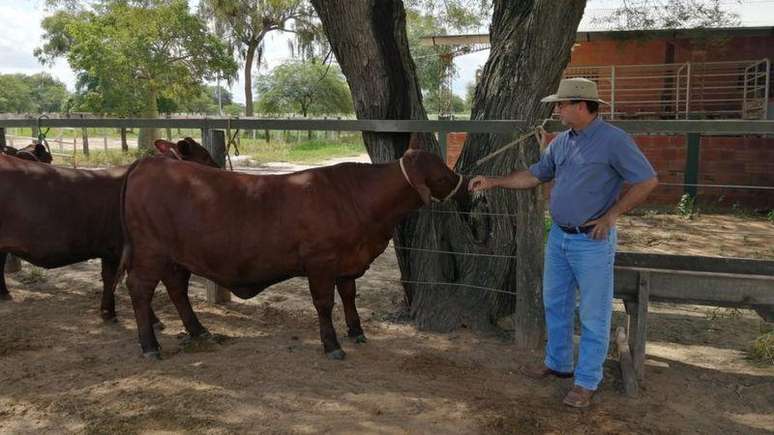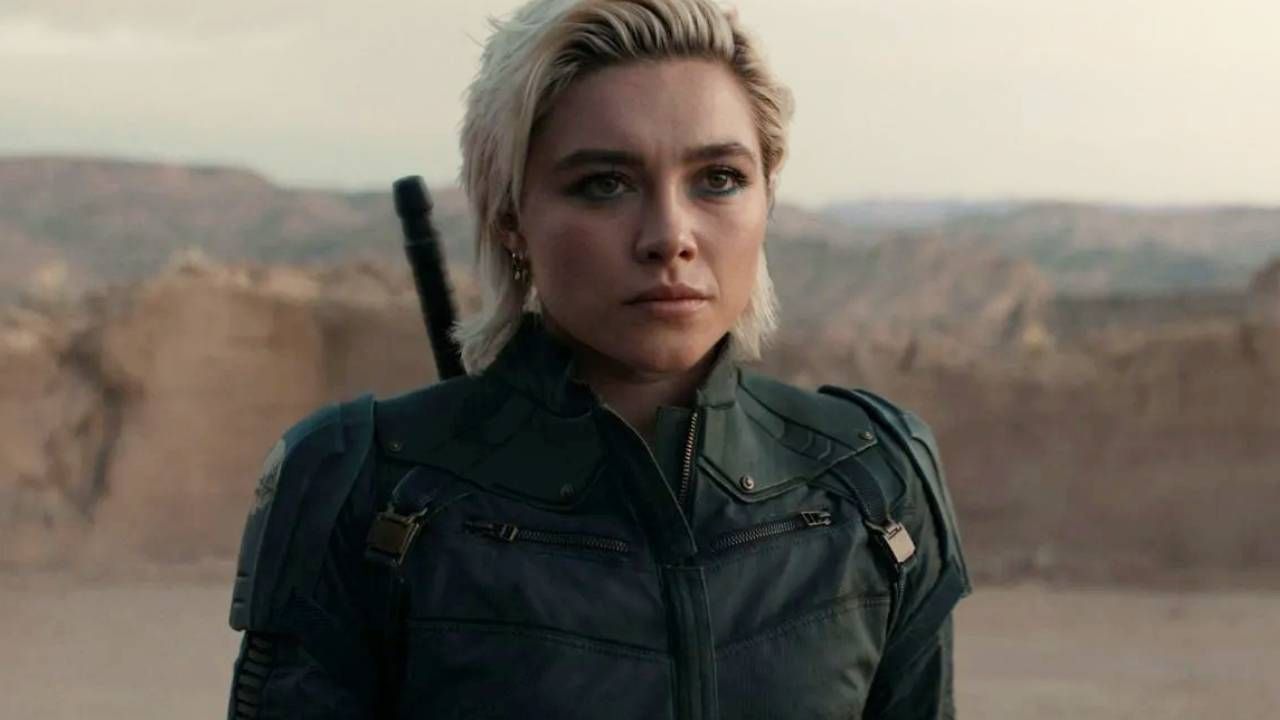The highway will cross the regions of Mato Grosso do Sul in Brazil, Gran Chaco in Paraguay, the provinces of Salta and Jujuy in Argentina and the regions of Antofagasta and Tarapacá in Chile.
“It’s a new Panama Canal.” This is how Egon Neufeld describes the Bioceanic Corridor, a gigantic infrastructural project that will try to connect the Pacific coast of Chile with the Atlantic coast of Brazil.
Neufeld, a wealthy owner of vast lands in Paraguay, says the highway – which will be about 2,200 kilometers long and will pass through Argentina, Brazil, Chile and Paraguay – will make it easier for farmers and peasants in the region to transport livestock and export products — for export to ports that are in the Atlantic and Pacific.
The governments of each of the countries involved in the project have shown support, but Paraguayan President Mario Abdo has been a major driver.
“Paraguay is the fourth largest exporter of soybeans in the world. To reach the Pacific Ocean, soybeans have to pass through the Panama Canal. With the new road ready, there will be savings for the entire production sector of about 25% in logistics costs,” the president enthusiastically told the BBC.
Approximately 525 kilometers of this new highway crosses the region known as the Gran Chaco, one of the main environmental reserves of the country, populated by savannahs and wetlands.
It is home to jaguars, pumas, anteaters and thousands of plant species, one of the most biodiverse places on the planet.
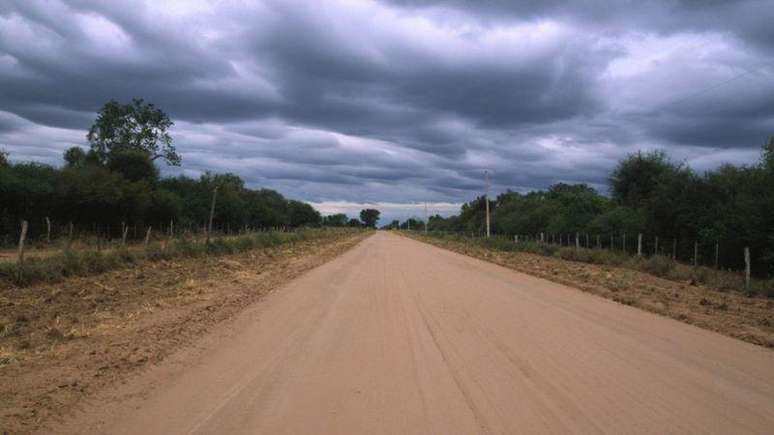
This place has not always been loved by those who wanted to settle in these lands.
When the Mennonites, a Protestant Christian community, landed there in the early 20th century, they called it “the green hell”.
Neufeld’s grandfather was one of the Mennonites who settled in the Chaco in the 1930s after escaping persecution in the Ukraine.
Nearly 100 years later, his grandson is still battling the hostile environment.
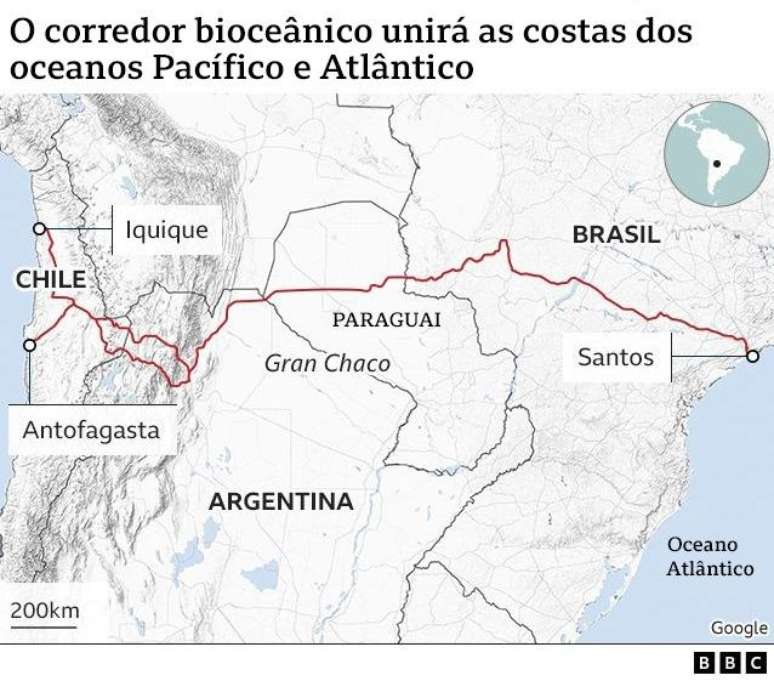
What is the Bioceanic Corridor?
The bioceanic corridor is an infrastructure project developed since 2015 by the governments of Argentina, Brazil, Paraguay and Chile to connect four ports located in the Pacific Ocean – Antofagasta, Mejillones, Tocopilla and Iquique – to the port of the Brazilian city of Santos.
The highway is estimated to be approximately 2,200 kilometers long and the approximate cost of the total investment is $10 billion.
The highway will cross the regions of Mato Grosso do Sul in Brazil, Gran Chaco in Paraguay, the provinces of Salta and Jujuy in Argentina and the regions of Antofagasta and Tarapacá in Chile.
Each country is responsible for meeting certain times and deadlines, but it is not clear what the deadline is for the completion of the project.
Indeed, in January of this year, the presidents of Brazil and Chile, Lula and Gabriel Boric, confirmed that they would speed up the construction of the sections that correspond to their territories.
Perhaps one of the most advanced countries in the execution of projects is Paraguay, which already has one of the three stretches of its territory ready.
“The first section of the bioceanic corridor, which is ready, has already allowed much easier access for businesses, because before the road was dirt and when it rained it was difficult to travel. Now you can easily reach the different Mennonite cities and their colonies ‘, engineer Alfredo Sánchez, government spokesman on the corridor issue, told the BBC.
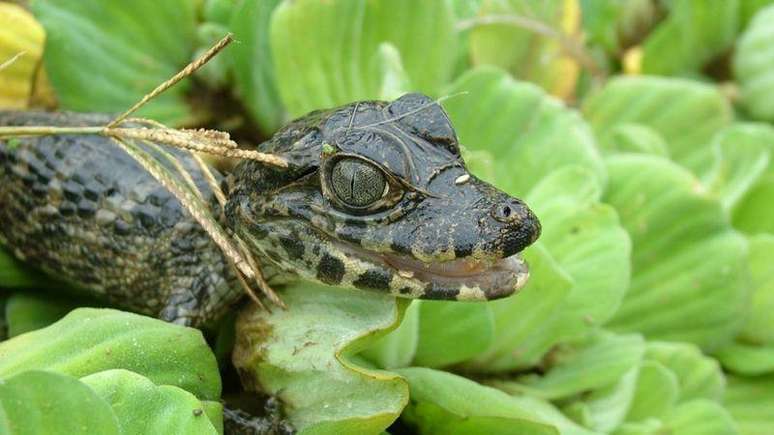
“For us, the biggest problem is that we have to remove weeds from the fields. If you’re not careful, these weeds come back and take over everything,” he explained.
For Neufeld, the highway will provide more job opportunities that will attract people from other parts of Paraguay.
Your community has managed to establish itself successfully in some sections of the “green hell”, in particular it has managed to build a profitable industry of livestock and dairy products, which are now transported by 4×4 trucks rather than horse-drawn carts as in other communities.
But what is attractive to some is troubling to others.
Taguide Picanerai, young leader of the Ayoreo indigenous community, one of the first to inhabit the Chaco, the community is already suffering the effects of deforestation, as thousands of trees have been cut down for cattle breeding.
About 20 percent of the Gran Chaco forest, the area equivalent of New York state, has been converted to land for cattle grazing and agro-industrial production since 1985, according to NASA satellite photographs.
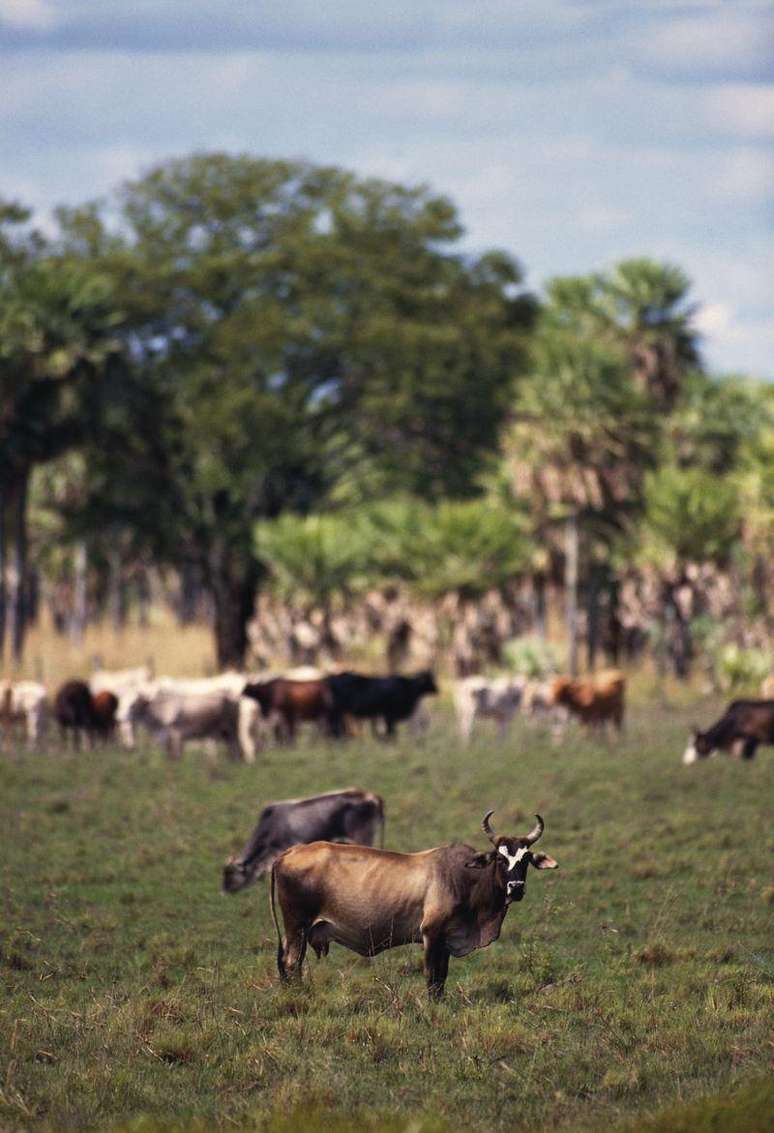
“The new road will mean more cattle ranching, which leads to a big loss of biodiversity,” says Picanerai, adding he is also concerned about the loss of land for the Ayoreo.
He explains that in the past, producers moved into the Ayoreo’s ancestral lands, cut off access to water, and restricted hunting space for indigenous communities.
The lives of the Ayoreo have changed significantly in just one generation. Picanerai’s parents lived in the impenetrable forest, where they hunted wild boars and turtles.
The community was persuaded by American missionaries who arrived in Paraguay in the 1960s to abandon the life of hunters, take up clothing and settle with other indigenous communities.
And much of their land was sold to ranchers and ranchers, leading to years-long legal battles to get some of that land back so the community could re-establish itself.
“This territory is vital for us,” said Picanerai.
the environmental threat
President Abdo acknowledges that the new highway “will increase the population in the Chaco” and generate “more commercial activity”. But he believes that as long as the laws are followed, the impact will be positive.
He told the BBC that there were already hard-and-fast rules for landowners, including a clause that “the maximum people can deforest in the Chaco is 50 per cent of their large estates, and less if the area’s biodiversity is deemed more sensitive.” “.
For environmentalist Miguel Lovera, these measures are not enough.
“The construction of new roads leads to more deforestation and the cutting of forests into small sections, which puts enormous pressure on the fragile ecosystem,” said Lovera, who heads an organization that fights to protect indigenous groups in the Chaco.
Instead for Bianca Orqueda, young singer and songwriter of the indigenous group Nivaclé, the road has positive implications.
Orqueda, who runs a music school for children on the outskirts of the Mennonite city of Filadelfia, divides her time between her community and Paraguay’s capital, Asuncion.
And the highway will help you shorten your travel times.
She is not convinced it is possible for her community to continue to live in isolation, adding that the Nivaclé need to “progress,” which for some may mean leaving the Chaco and its way of life behind.
“I tell kids that if they want to be a doctor or an architect or a dentist or a musician, they’ll have to leave as soon as they finish school and move to another city.”
“Here in Philadelphia there are no universities, there is nothing unless you want to go into agriculture,” Orqueda said.
For Picanerai, the conservation of the Chaco is much more than the way of life of its indigenous community.
“The Chaco’s rich biodiversity means it’s a global problem that should concern everyone,” he said, adding that he is determined to protect his land from newcomers who move to the region after work on the new highway ends.
Source: Terra
Rose James is a Gossipify movie and series reviewer known for her in-depth analysis and unique perspective on the latest releases. With a background in film studies, she provides engaging and informative reviews, and keeps readers up to date with industry trends and emerging talents.

